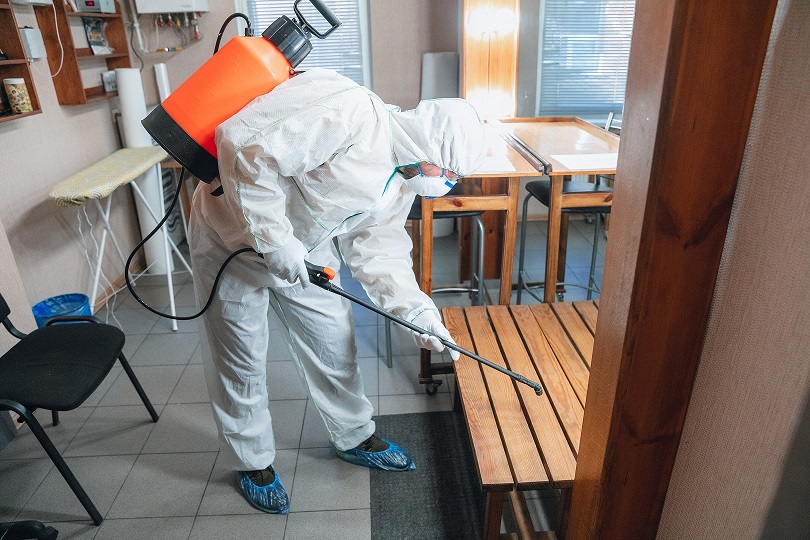Due to its warm environment, Singapore is a great place for mosquitoes to grow, which is problematic because they may spread diseases like Dengue and Zika. The growing number of these viruses in Singapore has raised concerns since they offer serious health hazards. Mosquito bites are the primary means of transmission for Dengue, which is notorious for its severe flu-like symptoms, and Zika, which is known to cause birth problems. To safeguard our communities and ourselves, we need to be aware of these threats.
Identifying the Mosquito Species in Singapore: Aedes, Culex, and Anopheles
Mosquitoes of Aedes: The Main Risk
The distinctive black and white stripes on their bodies make Aedes mosquitoes easy to identify. They are most active at dawn and dusk and like to reproduce in stagnant water. These mosquitoes serve as the main carriers of the Dengue and Zika viruses. They are especially problematic in Singapore’s heavily populated areas because of their propensity for urban locations.
Culex and Anopheles: Other Species to Watch
Although Aedes is primarily responsible for the spread of severe illnesses, Culex and Anopheles mosquitoes can also be dangerous. Culex mosquitoes are recognised vectors of the Japanese encephalitis virus and are frequently found in contaminated water. Malaria is largely carried by Anopheles mosquitoes, which breed in clear, uncontaminated water. They’re nonetheless noteworthy even if they’re less frequent in Singapore’s cities.
Lifecycle and Breeding Habits of Mosquitoes: Insights into Their Proliferation
From Eggs to Adults: A Rapid Transformation
The life cycle of a mosquito is remarkably short, especially given Singapore’s warm environment. Hundreds of eggs are laid by a female mosquito, and they hatch in a few days. In almost a week, these eggs develop into larvae, pupae, and adult mosquitoes. Because of their quick cycle, mosquito populations have the potential to grow rapidly if they are not controlled.
Reproductive Sites: What Draws Mosquitoes?
Mosquitoes are drawn to still water. These are the ideal places for them to reproduce, whether they are little puddles or water gathered in containers. Particularly Aedes mosquitoes are known to reproduce in man-made containers, which makes metropolitan settings like Singapore perfect for them. Additionally, clean and contaminated water bodies serve as hatching grounds for Culex and Anopheles, respectively.
Singapore’s Climate: A Breeding Paradise
Singapore’s warm, muggy climate makes it the perfect place for mosquitoes to flourish. This implies that we must regulate their breeding habitats with much more vigilance. Performing routine inspections and eliminating standing water from our environment is a straightforward yet impactful measure in this regard.
DIY Mosquito Control: Preventive Measures and Home Remedies
Simple Steps for a Mosquito-Free Home
The first step is to remove any standing water. Because stagnant water attracts mosquitoes, it’s important to empty buckets and flowerpot plates on a regular basis. Secondly, you may drastically cut down on the amount of mosquitoes that enter your home by utilising window screens and mosquito netting.
Natural Deterrents: A More Secure Option
For individuals who would rather take a natural approach, mosquitoes are known to be repelled by specific plants and oils, such as eucalyptus and citronella. They provide a safer, more ecologically friendly alternative to chemical repellents, even if they might not be as effective.
Professional Mosquito Control Methods: Strategies Employed in Singapore
Larviciding: Nipping the Problem in the Bud
Larviciding targets mosquitoes at their larval stage. Preventing the growth of these pests is a proactive strategy. To impede the growth of the larvae, specialists employ a variety of larvicides, including biological agents or chemical insecticides. By applying these remedies to both indoor and outdoor sources of stagnant water, they are able to prematurely stop the mosquito life cycle.
Misting: A Focused Method
Misting is the process of applying a thin layer of pesticide to particular regions. This technique is perfect for treating smaller, focused zones since it is less intrusive than fogging. Adult mosquitoes are killed upon contact by pesticide droplets present in the mist that land on surfaces. It’s a fast fix that works particularly well amid unexpected increases in mosquito activity.
Fogging: Covering a Wide Area
In Singapore, fogging is a typical sight, particularly in regions where mosquito activity is strong. With this technique, an insecticide is vaporised and a wide-spread fog is produced using a fogger machine. It works especially well in areas that are difficult to access, such as sewers or thick vegetation. Although fogging provides instant relief, it is often used as a component of a more comprehensive pest management plan.
Pest Control Service in Singapore: When to Seek Professional Help
Determining the Requirement for Expert Assistance
It may be necessary to hire professionals if you constantly encounter mosquitoes in your house or if you get bitten on a regular basis. More thorough remedies can be provided by a professional pest control service, particularly in regions with dense mosquito populations.
What Expert Services Provide
Singaporean pest control service employs a variety of techniques to address mosquito issues. These tactics, which range from larviciding to fogging and misting, target adult mosquitoes as well as their reproductive grounds. Experts can also offer solutions that are customised for your particular circumstance.
Choosing the Option
Choosing to work with a pest control service can help you feel more at rest, particularly in places where mosquito-borne illnesses are common. It’s an expenditure for your well-being and health.
Role of Integrated Pest Management (IPM) in Mosquito Control
A Balanced Strategy
IPM entails evaluating the mosquito issue, keeping an eye on the circumstances, and implementing a mix of chemical, physical, and biological control techniques. This method seeks to stop infestations in the future in addition to solving the current problem.
Engaging the Community: Essential to Success
Participation in the community is a key component of IPM. It makes a big impact to inform the people about preventative care and to encourage their involvement. Mosquito management is, after all, a shared duty.
Long-Term Advantages
We can address the existing mosquito problem and promote a more balanced and healthy ecology by implementing Integrated Pest Management (IPM). The goal is to come up with a solution that is both immediate and long-lasting.
Associated Health Risks and Long-term Effects of Mosquito-Borne Diseases
In Singapore, mosquitoes are more than just an annoyance. They are major health dangers since they are carriers of illnesses like Dengue and Zika. We must comprehend these threats to safeguard our communities and ourselves.
The Severe Effects of Dengue and Zika
The initial symptoms of being bitten by a mosquito carrying Dengue or Zika might vary from minor to severe. Frequent symptoms of dengue include joint discomfort, intense headaches, and high fever. It can sometimes develop into Dengue Hemorrhagic Fever, a more serious and potentially fatal type.
Conversely, Zika may result in less severe symptoms including fever, rash, and joint discomfort. That being said, pregnant women should be especially concerned about it because it can result in catastrophic birth abnormalities in the foetus.
Long-Term Health Concerns
These illnesses can have far-reaching effects that go much beyond the initial infection. After recovering from dengue, some people may continue to feel tired and have joint discomfort. The long-term implications of Zika are still being investigated, but a big worry is how it can affect children’s brain development.
Read Also – Termite Infestations in Singapore: A Guide to Pest Control Services




